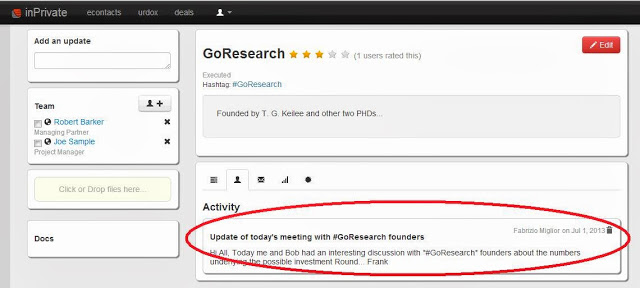|
Scaling sales can be a challenging task for any business, and it's no different for my friend Jane. Jane is the owner of a small online clothing store that specializes in handmade, sustainable clothing. She's been in business for a few years now, and she's been doing pretty well. But lately, she's been struggling to keep up with the demand for her clothing.
Jane's business started out small. She would make a few pieces of clothing each week and sell them on her website. As her business grew, she started hiring a few people to help her with the production and shipping. But as her sales continued to grow, she found herself struggling to keep up with the demand. At first, Jane tried to handle everything herself. She would work long hours and try to keep up with the orders. But as the orders continued to pour in, she started to feel overwhelmed. She knew that she needed to find a way to scale her sales, but she didn't know where to start. That's when she decided to reach out to me for help. I've been in the e-commerce business for a while, and I've seen firsthand how important it is to scale your sales. I shared some of my experience with her and provided her with some advice on how to scale her sales. The first thing I told Jane was that she needed to focus on her website. Her website was the foundation of her business, and it needed to be able to handle the traffic that she was getting. I suggested that she invest in a website redesign, and make sure that her website was mobile-friendly and easy to navigate. The next thing I told Jane was that she needed to invest in a good inventory management system. She was using an Excel spreadsheet to track her inventory, which was not efficient and it was hard to manage with the number of orders she was receiving. I recommended that she use an inventory management system that would allow her to keep track of her inventory in real-time, and that would automatically update her website when an item was sold out. Finally, I suggested that Jane invest in a good marketing strategy. Her website was getting a lot of traffic, but she wasn't converting that traffic into sales. I suggested that she invest in paid advertising and use social media to drive more traffic to her website. Jane took my advice and made the changes to her business. And it worked! She saw an increase in sales, and was able to handle the demand for her clothing. She also was able to reduce her stress and focus on growing her business. Scaling sales can be a challenging task, but with the right strategy and the right tools, it's possible. My friend Jane is a prime example of this. She was able to turn her small business into a successful enterprise by focusing on her website, inventory management, and marketing strategy. If you're facing similar challenges in your business, I hope you can learn from Jane's story and find a way to scale your sales.
0 Comments
Scaling a business is no easy feat. As a business owner, I know this all too well. I've been running my company for a few years now, and while we've had some success, I've struggled to take it to the next level. But through trial and error, I've learned some valuable lessons about scaling a business that I want to share with you.
First and foremost, it's important to have a clear vision for what you want your business to become. This means setting specific, measurable goals and creating a plan to achieve them. For me, this meant identifying our target market, understanding their needs and wants, and then creating a product or service that would meet those needs. Once you have a clear vision and plan in place, it's important to focus on building a strong team. As your business grows, you'll need to bring on new employees to help you manage the increased workload. But it's not just about hiring more people, it's about hiring the right people. Make sure to hire individuals who are aligned with your company's values and mission, and who have the skills and experience to help your business succeed. Another key aspect of scaling a business is having the right systems and processes in place. As your business grows, it's essential to have systems in place to manage things like development, customer service, and finances. Without these systems, it can be difficult to keep up with the increased demand, and your business may begin to suffer. Finally, it's important to be willing to adapt and evolve as your business grows. This means being open to new ideas, trying new things, and being willing to pivot when things aren't working out. For me, this meant experimenting with different marketing strategies, and even rebranding our company to better align with our target market. In summary, scaling a business is not easy, but it is possible. The most important thing is to have a clear vision, build a strong team, have the right systems and processes in place, and be willing to adapt and evolve as your business grows. I hope my experience can help you in your journey to scale your business.  Measure your Performance as a General PartnerWe continue to enhance our solutions by developing value added benefits for our customers. We add new features upon your request, included in your subscription fee!Here what has been done for you this month on InPrivate:
Sign Up for a Demo Now or Create a Company Account, your first user is Free. You'll be able to add more users whenever you want according to our Pricing page. What is InPrivate? InPrivate is the Cloud Software dedicated to Private Equity Firms and Venture Capitals, but easily used by Business Advisors, Legal Firms and other companies for keeping track of their Deal Flow and their Fund Raising processes. Custom modules are also available for Investor Accounts Reporting, HR Assessment, and more. See www.inprivate.info for details or read our features flyer. What about Services? We'll give you all the support and the advice you need for starting up with InPrivate and we encourage you to ask for new features. InPrivate will help you optimize for efficiency, save time, reduce stress and increase customer satisfaction. Do you know any reason to wait more? Sign Up for Free today, or contact us Some major features have been added last month following our customer requests. We are excited to describe the new benefits that have been put in place recently:
What is InPrivate? InPrivate is the Cloud Software dedicated to Private Equity Firms and Venture Capitals, but easily used by Business Advisors, Legal Firms and other companies for keeping track of their Deal Flow and their Fund Raising processes. Custom modules are also available for Investor Accounts Reporting, HR Assessment, and more. See www.inprivate.info for details or read our features flyer. What about Services? We'll give you all the support and the advice you need for starting up with InPrivate and we encourage you to ask for new features. InPrivate will help you optimize for efficiency, save time, reduce stress and increase customer satisfaction. Do you know any reason to wait more? Sign Up for Free today.  "A hashtag is a word or a phrase prefixed with the symbol # ... Hashtags provide a means of grouping such messages, since one can search for the hashtag and get the set of messages that contain it." (from Wikipedia) Hashtags are extensively used on social networks, but they could be helpful for your business, too. Imagine to keep in copy your Deal Flow Management System while writing an e-mail related to to a specific activity you've done you just want to send to your team: by including a specific hashtag as your deal's identifyer, your system will parse it and will add it to the activity log of the deal. inPrivate Deal Flow Updates your deals by parsing your e-mails and seeking hashtags inPrivate has now this hastag parsing feature for inbound e-mails: try it by subscribing for a free Trial here.  We are excited to announce a new major release of inPrivate Saas with unlimited support for permissions and roles on the users of your organization; you will share your deals only with specific users assigning different privileges to let your team members view or edit each information. Your confidential information will be shared only betweeen limited groups of users. The new Dealflow also supports:
If your company is an Advisor in the Private Equity Business, is a Venture Capital or if you are in any other industry, the use of checklists for managing your projects is very common. So, there's nothing new with the use of the checklists itself. But depending on how you use your checklists and on how much you are accurate in your approach, your results will be different and the time you could save could vary a lot. You have a huge experience and a long track record of Deals in the Private Equity Business, you are a M&A Advisor or you manage a Venture Capital Fund, so you should use your knowledge (and a bit of your time) to identify the common tasks for each category of the Deals that you know. You probably consider each Deal unique, with a lot of unattended events, and you know that the key variables to succeed are 'soft', due to the ability on creating relationships, on understanding other's intentions, negotiation, and so on. So: managing a Deal Flow is not like building a car in 1930. True. Anyway, you'll have a lot of benefits by seeking a formal (and flexible) model; more than a schema is possible, but let's now analyze the checklist approach: - Choose the set of stages your deals could have (i.e.: Screening, Live, Success, Broken, etc) - Identify the macro categories of your deals (i.e.: M&A, IPO, etc...) - For each category, create a checklist with a list of Tasks. This is the key and the most difficult task; try to focus on the type of tasks you could have in the category and write down some instructions specifying the input and output for each task, such as writing/signing a document, meeting with contacts and so on. Always create an 'End' task to mark the checklist as finished. - Identify wich tasks require to manage a list of contacts to be completed. In a task focused on finding customers or investors, you should iterate on a list of prospect contacts and you should do some action for each one. Then you should instantiate your checklist model for your real world. How? And how to keep it flexible/adaptive? Try it using a spreadsheet, but keep in mind that you can't manage more than a few complex deals in Excel without confusion; some hints:
Let me have your comments. On inPrivate Software we recently introduced a flexible way to manage checklists and tasks inside the deals, Sign Up for free here, learn more about inPrivate Software or ask for a Demo here. Before giving you some details about our last updates on the budget management process for private equity deals, I should explain what is the “working version” of the Bid Budget on inPrivate Systems. Our users can add a Bid Budget for a specific deal, adding “rows” to a specific version. Each row, upon the completion of the process, will become a real contract with an advisor, and it contains the type of the service (Financial Advisory, Technical Avisory, etc), the name of the Advisor and the budgeted retainer and success fees.
When the budget is approved by the board, the system freezes this version, but the user can open a “working version” of the Bid Budget based on the last approved version. This version is useful because users can “adjust” the budget values within the constraints imposed by the board.* The main constraints are to not exceed the overall amounts approved by the boards, neither the total retainer, nor the retainer plus the success amount. Other constraints could be on the amounts for each row of the bid budget; for example, if the amount approved for a single Advisory service is greater than a specified maximum amount, the user can't change the name of the consultant and he can't input a greater amount. Users can't modify the budget row if the relative contract is signed. If it's necessary to force a new update on the budget, they should restart the workflow of the contract, so the the approval process restarts for that contract. Another improvement is that the entire budget now has its own workflow; when the users marks the budget as “approved from the board”, the entire budget is sent through the system to a member of the board, to let him certify that it’s the right version that it was effectively approved by the board. If you’re interested in a demo or in a Trial Version of inPrivate Systems, please request it here. (*) Usually the board approves also a buffer amount to be used for later adjustments of the budget. |
CategoriesArchives |
Our Products & Services |
Company |
Support |
Copyright © 2014 InPrivate.info | +1 (650) 691-8579 | +39 333 3405514 | info@inprivate.info | V.A.T. 04035460965


 RSS Feed
RSS Feed
